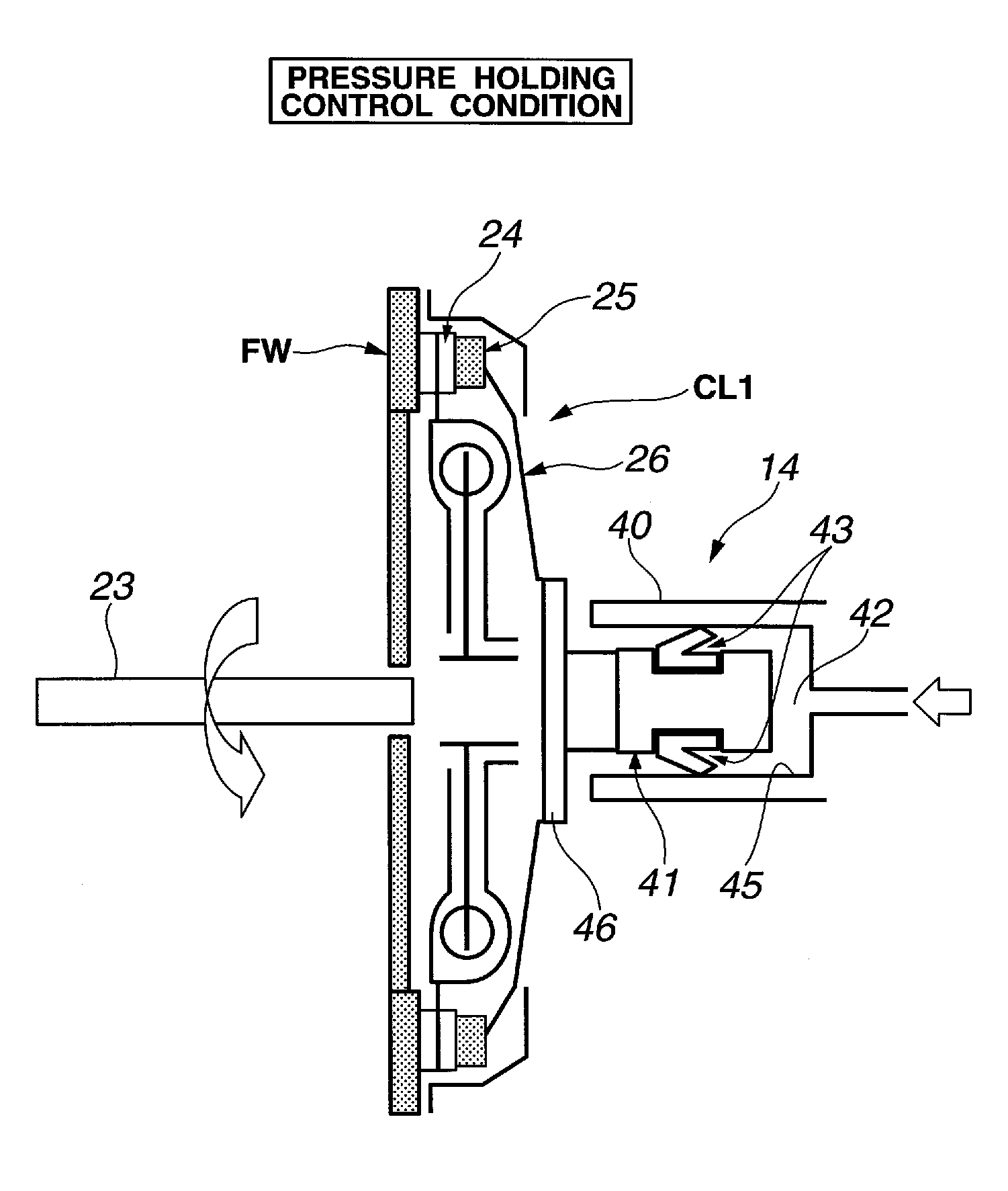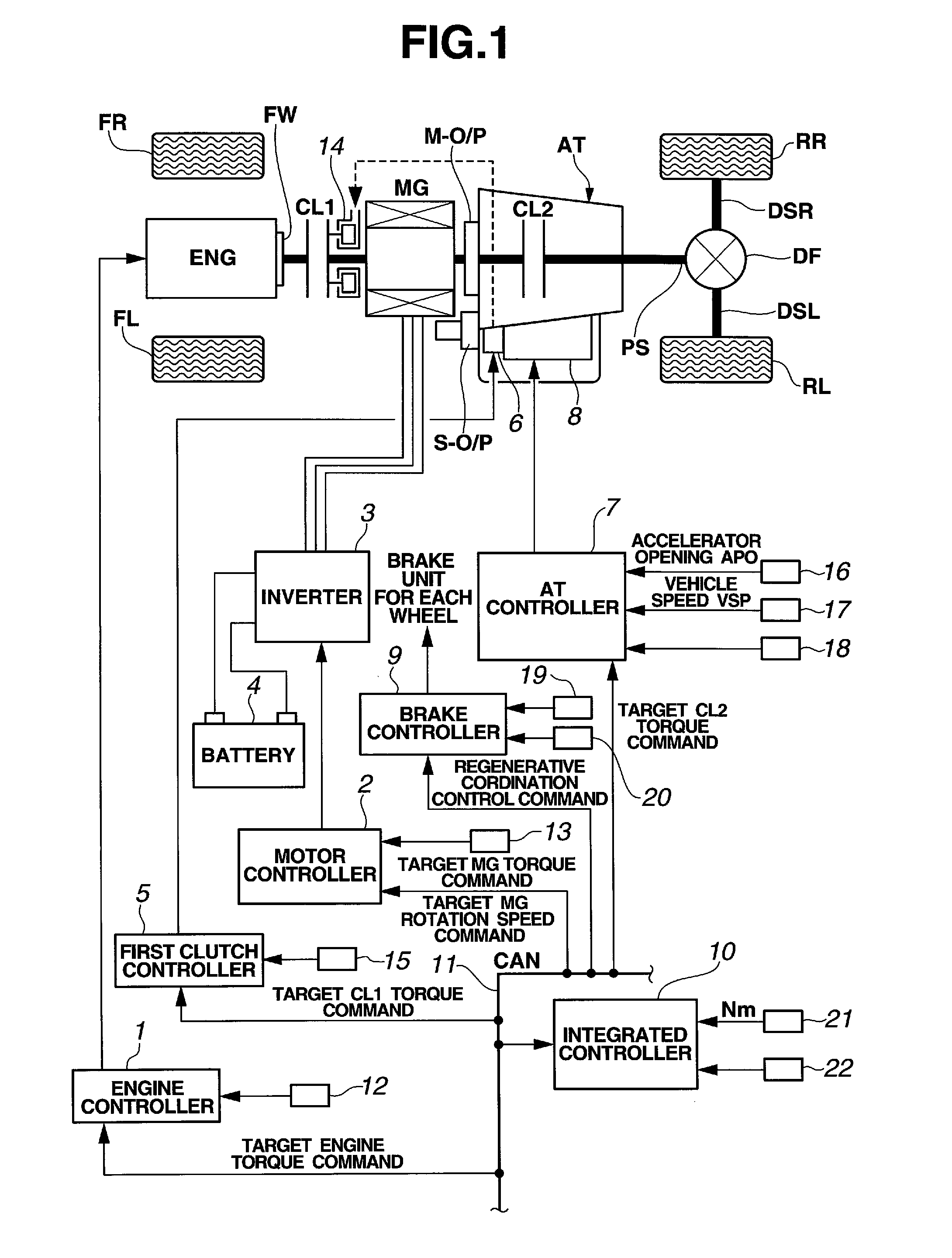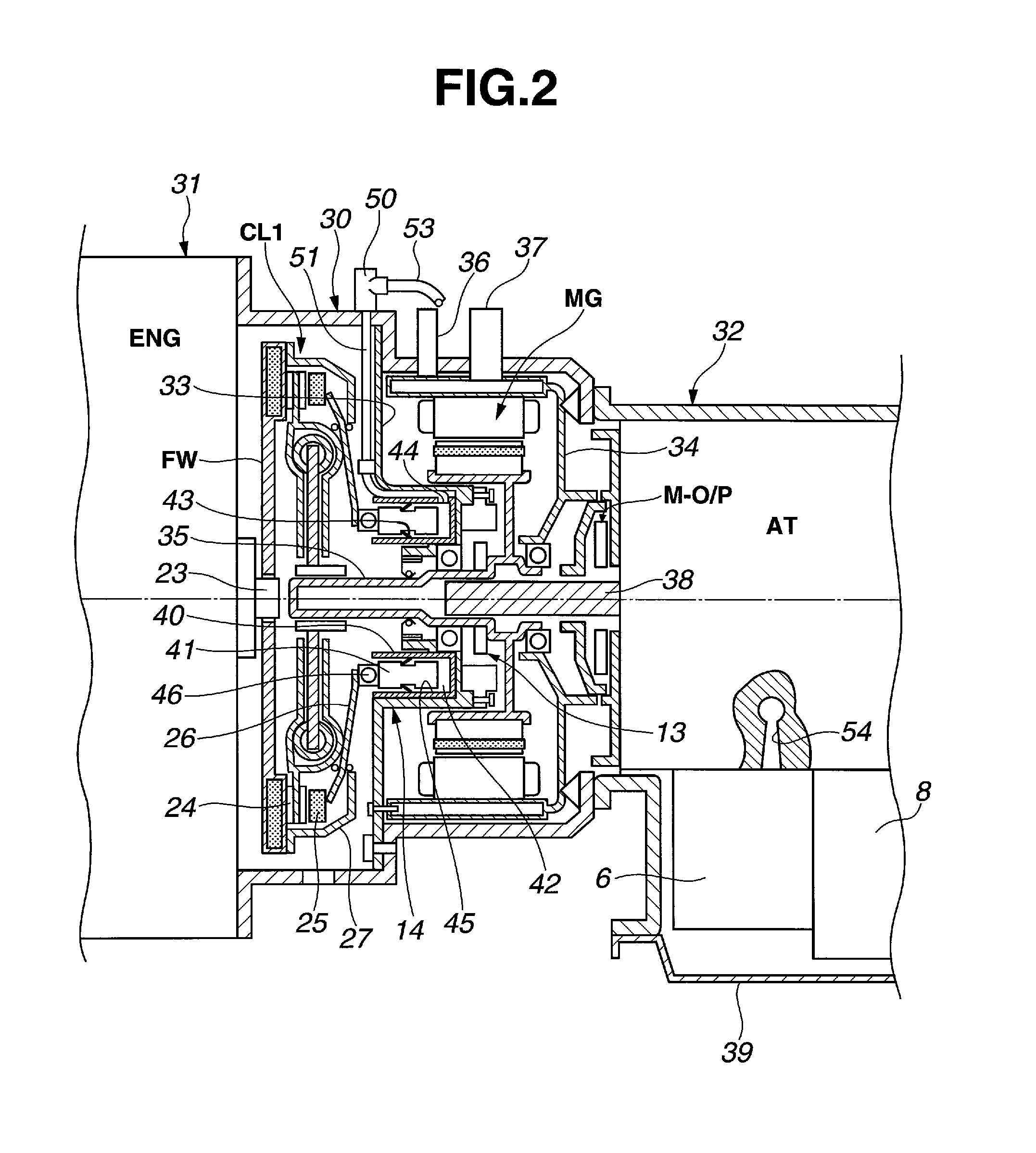Clutch control apparatus for vehicle
a technology for controlling apparatus and clutch, which is applied in the direction of fluid-actuated clutches, clutches, non-mechanical actuated clutches, etc., can solve the problems of deterioration in the operability of the piston, oil leakage from the seal member of the hydraulic cylinder, so as to suppress the increase in the sliding resistance of the piston to the housing slide surface, the effect of not enhancing the sealability
- Summary
- Abstract
- Description
- Claims
- Application Information
AI Technical Summary
Benefits of technology
Problems solved by technology
Method used
Image
Examples
Embodiment Construction
[0025]First, the construction of the clutch control apparatus for a vehicle according to embodiments of the present invention will be explained with reference to FIG. 1.
[0026]As shown in FIG. 1, a drivetrain of a FR hybrid vehicle that can incorporate embodiments of the invention includes engine ENG (driving power source), flywheel FW, first clutch CL1 (clutch), motor / generator MG, second clutch CL2, automatic transmission AT, propeller shaft PS, differential DF, left drive shaft DSL, right drive shaft DSR, left rear wheel RL (driving wheel) and right rear wheel RR (driving wheel). Further, FL denotes a left front wheel, FR denotes a right front wheel, M-O / P denotes a main oil pump and S-O / P denotes a sub-oil pump.
[0027]Engine ENG may be a gasoline engine or a diesel engine. Engine start control, engine stop control, etc., are carried out on the basis of engine control commands outputted from engine controller 1. Flywheel FW is disposed on an engine output shaft.
[0028]First clutch C...
PUM
 Login to View More
Login to View More Abstract
Description
Claims
Application Information
 Login to View More
Login to View More - R&D
- Intellectual Property
- Life Sciences
- Materials
- Tech Scout
- Unparalleled Data Quality
- Higher Quality Content
- 60% Fewer Hallucinations
Browse by: Latest US Patents, China's latest patents, Technical Efficacy Thesaurus, Application Domain, Technology Topic, Popular Technical Reports.
© 2025 PatSnap. All rights reserved.Legal|Privacy policy|Modern Slavery Act Transparency Statement|Sitemap|About US| Contact US: help@patsnap.com



